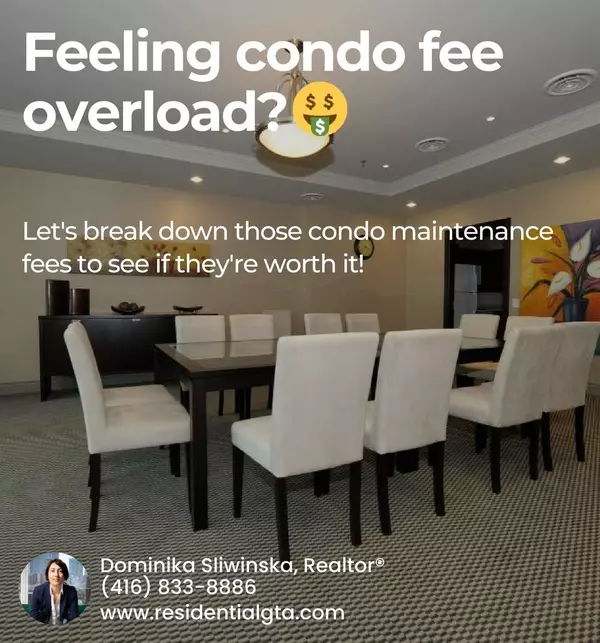10 Critical Things Every Buyer Should Look for During a House Inspection!
When you're ready to move from a cozy condo in bustling Toronto to a spacious house in the suburbs, one of the most important steps is the house inspection. Knowing exactly what to look for can save you time, money, and future headaches. Let’s dive into the 10 critical things every buyer should look for during a house inspection, broken down into three main topics.
🔍 5 Hidden Issues in Your Future Home That Most Inspectors Miss
1. Roof Damage
Many inspectors glance at the roof but may miss subtle signs of damage. Look for:
- Missing or broken shingles
- Sagging areas
- Water stains on the ceilings inside the house, which can indicate leaks
Inspecting the roof thoroughly helps in knowing if it needs immediate repairs or replacement, which can be costly.
2. Foundation Cracks
Small cracks can be normal, but large or growing cracks in the foundation can be a red flag. Check for:
- Cracks wider than 1/4 inch
- Cracks that appear zig-zaggy
- Doors and windows that stick, indicating foundation movement
Foundation issues can lead to major structural problems, so it's crucial to address them early.
3. Electrical System Issues
While basic checks are often done, many miss deeper issues like outdated wiring. Look for:
- Knob-and-tube wiring, which can be a fire hazard
- Double-tapped breakers
- Flickering lights or outlets that don't work
Updating an electrical system isn't cheap, so knowing the condition helps you budget accordingly.
4. Plumbing Problems
Some plumbing problems aren’t visible at first glance. Pay attention to:
- Water stains under sinks
- Slow drainage in sinks and tubs
- Water pressure issues
Undetected plumbing issues can lead to water damage and mold, so ensure a thorough check.
5. Insulation and Ventilation
Proper insulation and ventilation are crucial for maintaining indoor comfort and energy efficiency. Check:
- Attic and wall insulation type and condition
- Ventilation systems in kitchens and bathrooms
- Signs of mold or mildew in poorly ventilated areas
Good insulation and ventilation can significantly reduce energy costs, making your new home more affordable to live in.
🏠 The Ultimate Home Inspection Checklist: Don't Buy Without It!
6. Exterior Condition
Walk around the house and scrutinize the exterior. Check:
- Siding for cracks or decay
- Gutters for proper installation and drainage
- Door and window seals for drafts
A well-maintained exterior reduces the risk of costly repairs due to weather damage.
7. Interior Condition
Inside the house, ensure you inspect:
- Walls and ceilings for stains and cracks
- Floors for uneven spots or squeaks
- Doors and windows for smooth operation
The interior condition gives you a good indication of how well the house has been maintained.
8. Appliance Condition
Test all major appliances to ensure they are in good working order. This includes:
- Heating and cooling systems
- Water heaters
- Kitchen appliances like ovens, dishwashers, and refrigerators
Knowing the condition of the appliances helps you plan for replacements or repairs.
9. Safety Features
Ensure all safety features are present and functional. Look for:
- Smoke and carbon monoxide detectors
- Fire extinguishers
- Stair railings and handrails that are secure
Safety features are essential for protecting your family in your new home.
10. Pest Infestation
Look for signs of pest problems, as infestations can lead to damage and health issues. Check:
- Attics and basements for droppings or nests
- Wood structures for termite damage
- Exterior areas for ant or rodent activity
A pest-free home is more comfortable and healthier to live in.
🔥 How to Negotiate Repairs After a Home Inspection Like a Pro
Understanding the Inspection Report
Once you receive the inspection report, read it thoroughly. Look for:
- Major issues vs. minor repairs
- Cost estimates for each issue
- Potential long-term impacts if left unresolved
Understanding these helps you prioritize which issues are most important.
Prioritize Major Issues
Focus on negotiating repairs for major and immediate issues first. These could include:
- Structural problems
- Significant water damage
- Major electrical or plumbing issues
Sellers are more likely to address serious concerns rather than minor cosmetic fixes.
Request Repair Credits
Instead of asking the seller to make repairs, consider requesting repair credits. This allows you to:
- Choose your own contractors
- Ensure repairs meet your standards
- Have flexibility in the repair timeline
Requesting credits can often be more appealing to sellers who may not want to handle the repairs themselves.
Get Multiple Estimates
For big ticket repairs, get multiple estimates from licensed contractors. This helps in:
- Providing accurate figures during negotiations
- Ensuring you're not overpaying for work
- Understanding the scope and timeline of required repairs
Having multiple estimates gives you a stronger position in negotiations.
Be Willing to Compromise
Negotiations often require some give and take. Be prepared to:
- Accept a fair middle ground
- Prioritize the most critical issues
- Consider factors like the home's price and how long it's been on the market
Successful negotiations often involve finding a win-win solution for both parties.
---
Conclusion
House inspections can feel overwhelming, especially when upgrading from a condo in Toronto to a house in the suburbs. But, by knowing what to look for and having a structured approach, you can confidently navigate this critical step. Remember to use this guide as a handy checklist to ensure you don't miss any essential aspects. Your diligence now will pay off with a home that truly meets your needs, free from unforeseen issues. Happy house hunting!
Categories
Recent Posts










